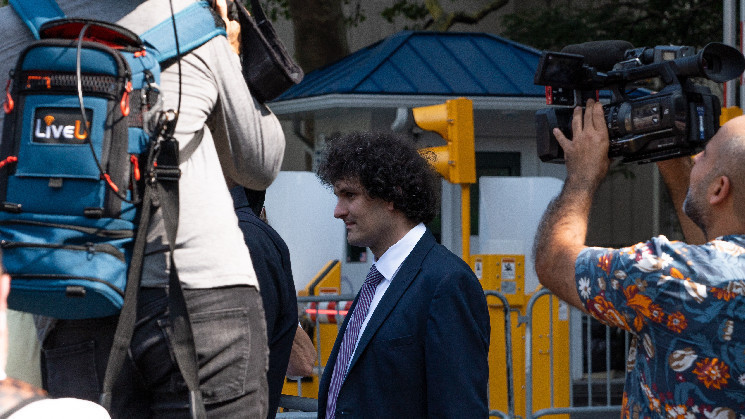Sam Bankman-Fried’s defense team argued the U.S. Department of Justice was misapplying legal precedent in arguing for a lengthy prison term.
The DOJ urged a sentence of 40 to 50 years, as opposed to the defense’s request for roughly 6 years, for the former FTX CEO.
Sam Bankman-Fried’s lawyers have pushed back against some of the legal cases cited by the U.S. government in its sentencing memo, which makes the case for why the Department of Justice think the former FTX CEO should be handed a sentence in the range of 40-50 years, a court filing on Wednesday said.
Bankman-Fried’s legal team already responded to the Department of Justice’s memo in a letter earlier this week, arguing the DOJ was trying to make the former FTX CEO out to be a “super villain.” In another letter Wednesday, the defense team took aim at some of the legal arguments presented by the prosecution.
Bankman-Fried was found guilty of fraud and conspiracy last year and will be sentenced on March 28. His defense attorneys argue a sentence of no more than 6.5 years is appropriate, given FTX creditors will recoup their losses, while the DOJ has argued for 40 to 50 years. A presentence investigation report recommended 100 years, though this is likely solely due to the loss at the time FTX filed for bankruptcy (north of $8 billion).
One of the contentions appears to be about the interpretations of a “precedent-setting” U.S. Supreme Court case, Kisor v. Wilkie, which was at least in part about whether punishment should be based on intended loss or actual loss, the Wednesday filing said.
The government argued that Bankman-Fried’s attempts to make the sentencing court follow the definition of “loss” based on the Supreme Court’s reasoning in Kisor v. Wilkie should be rejected.
“The Second Circuit and district courts within this Circuit have, even after Kisor, consistently applied the commentary on ‘intended loss’ when calculating the Guidelines range,” the DOJ said.
Bankman-Fried’s legal team retorted by saying that “all the government cites is a single, unpublished, non-precedential summary order from the Second Circuit that quotes a decision from five years before Kisor, that did not consider this Kisor argument, and that ultimately applied actual instead of intended loss.”
Bankman-Fried’s lawyers have argued that the “harm to customers, lenders, and investors is zero” and thus a maximum sentence of 6.5 years in prison should be considered. On Wednesday, current FTX CEO John J. Ray III called that claim that customers lost “zero” money in the exchange’s 2022 collapse, “categorically, callously, and demonstrably false.”
The question of loss ties to FTX’s former customers, who are now the bankrupt exchange’s creditors. The exchange’s bankruptcy team, which is led by Ray, now estimates that these customers might receive almost all of their assets’ value as of the date of FTX’s bankruptcy in November 2022. Part of this comes from recoveries Ray’s team secured over the past year and a half, while some of that value may be attributed to the recent rise in crypto values.
Victim impact statements from FTX customers argue that while they might receive their 2022 values, they will have missed the upside from crypto’s price rise over the past year.
Losses are just one factor that Judge Lewis Kaplan, who’s overseeing Bankman-Fried’s case, will have to weigh as he considers what sentence to impose. Other factors include evidence presented at trial, the character reference and victim impact statements submitted by both the defense and prosecution and even possible testimony during next week’s sentencing hearing, said Tama Kudman, a partner at Kudman Trachten Aloe Posner LLP.
The presentence report, which recommended 100 years, is a “mechanical calculator … what [the report’s writers are] saying is ‘in consulting guidelines, this is the conclusion,'” she told CoinDesk.
“What the defense is saying to the judge is, ‘look, this is a nonsensical, draconian [sentence],'” she said. “Their argument is that this guideline calculation is wrong because there was really no actual loss to the victim, if you look at loss at the time of the crime.”
Read the full article here









